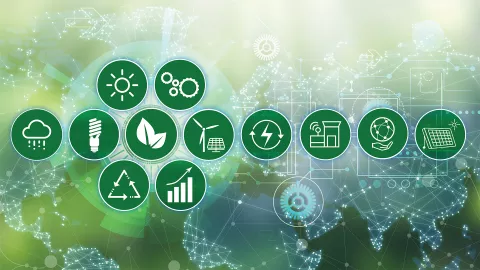
Energy Mangement involves the efficient and effective use of energy resources to achieve various objectives, including reducing energy consumption, minimizing costs, enhancing sustainability, and ensuring reliable energy supply. It encompasses a range of activities and practices aimed at optimizing energy use across different sectors, such as residential, commercial, industrial, and transportation.
Key components include:
Energy Audit: Conducting a comprehensive assessment of energy consumption to identify where and how energy is used, wasted, or could be saved. This includes evaluating energy systems, equipment, and practices.
Energy Monitoring: Installing meters and sensors to track energy consumption in real-time. This data helps in identifying trends, anomalies, and opportunities for improvement.
Energy Efficiency and Conservation Measures: Implementing strategies and technologies to reduce energy consumption. This can include upgrading to energy-efficient lighting, HVAC systems, motors, and insulation, as well as optimizing operational practices.
Renewable Energy Integration: Incorporating renewable energy sources such as solar, wind, and biomass to reduce reliance on non-renewable energy and lower greenhouse gas emissions.
Building Management Systems: Using automated systems to control and monitor building operations such as heating, ventilation, air conditioning (HVAC), lighting, and security systems to optimize energy use.
Energy Procurement: Strategically purchasing energy to secure favorable rates and terms. This may involve negotiating contracts, considering alternative energy suppliers, and exploring options like demand response programs.
Demand Management: Adjusting and controlling energy use during peak demand periods to avoid high charges and reduce strain on the energy grid. This can involve load shifting, load shedding, and using backup generators.
Employee Engagement and Training: Educating and involving employees in energy conservation efforts. Training programs and awareness campaigns can encourage energy-saving behaviors and practices.
Policy and Regulation Compliance: Ensuring adherence to local, national, and international energy regulations and standards. This includes reporting requirements, energy performance standards, and incentives for energy efficiency.
Energy Performance Contracting (EPC): Partnering with energy service companies (ESCOs) to implement energy-saving projects. ESCOs often guarantee energy savings and may fund projects through the savings achieved.
Sustainability and Environmental Goals: Aligning energy management practices with broader sustainability and environmental objectives, such as reducing carbon footprint and achieving certifications like LEED or ISO 50001.
Continuous Improvement: Regularly reviewing and updating energy management strategies to incorporate new technologies, best practices, and lessons learned. Setting targets and tracking performance to drive ongoing improvements.
Effective energy management not only helps in reducing energy costs and environmental impact but also enhances the overall efficiency and resilience of operations. It requires a holistic approach, integrating technical, behavioral, and strategic elements to achieve sustainable energy use.